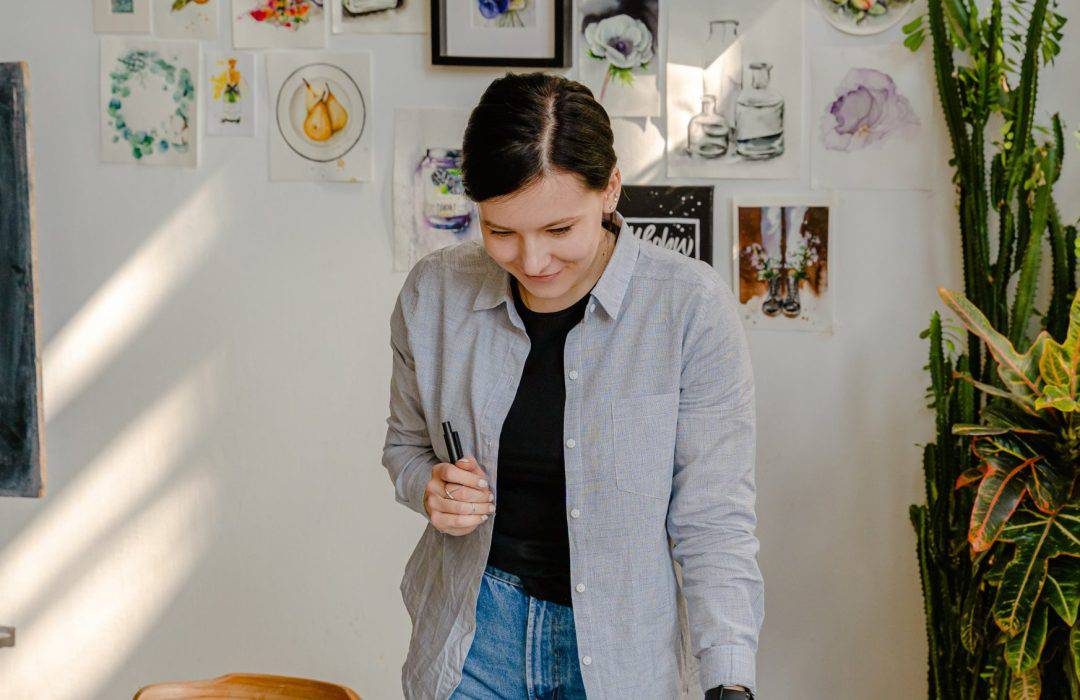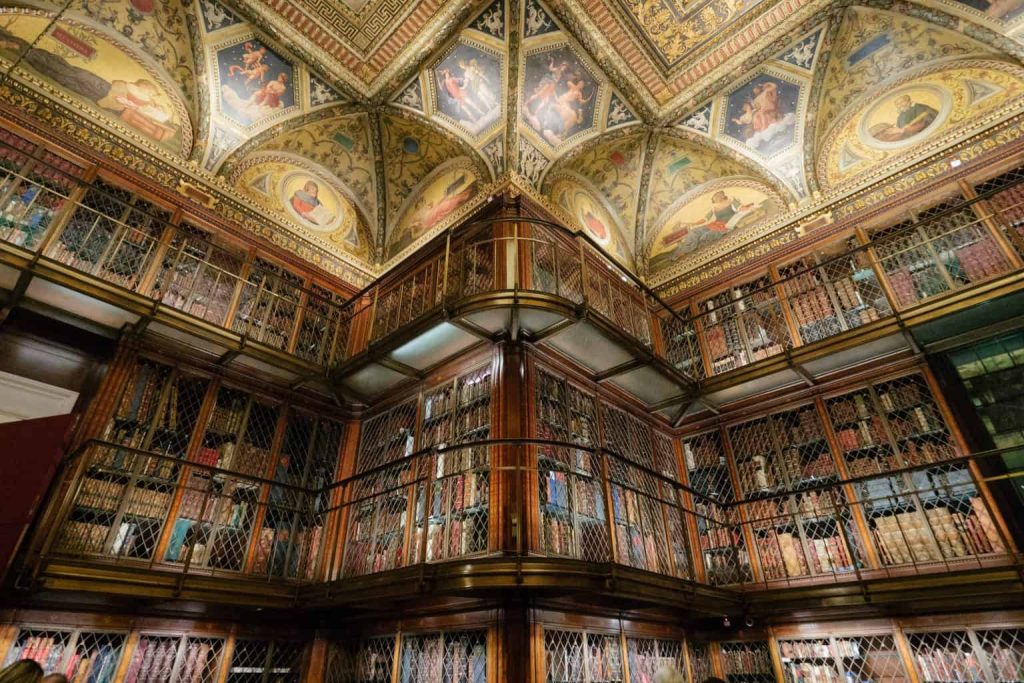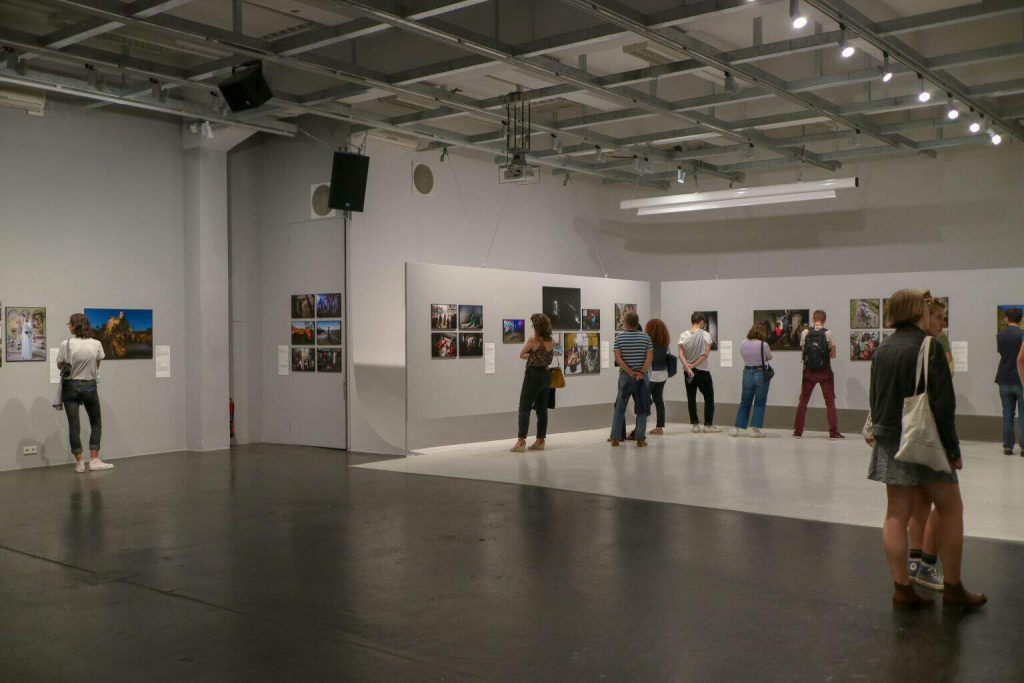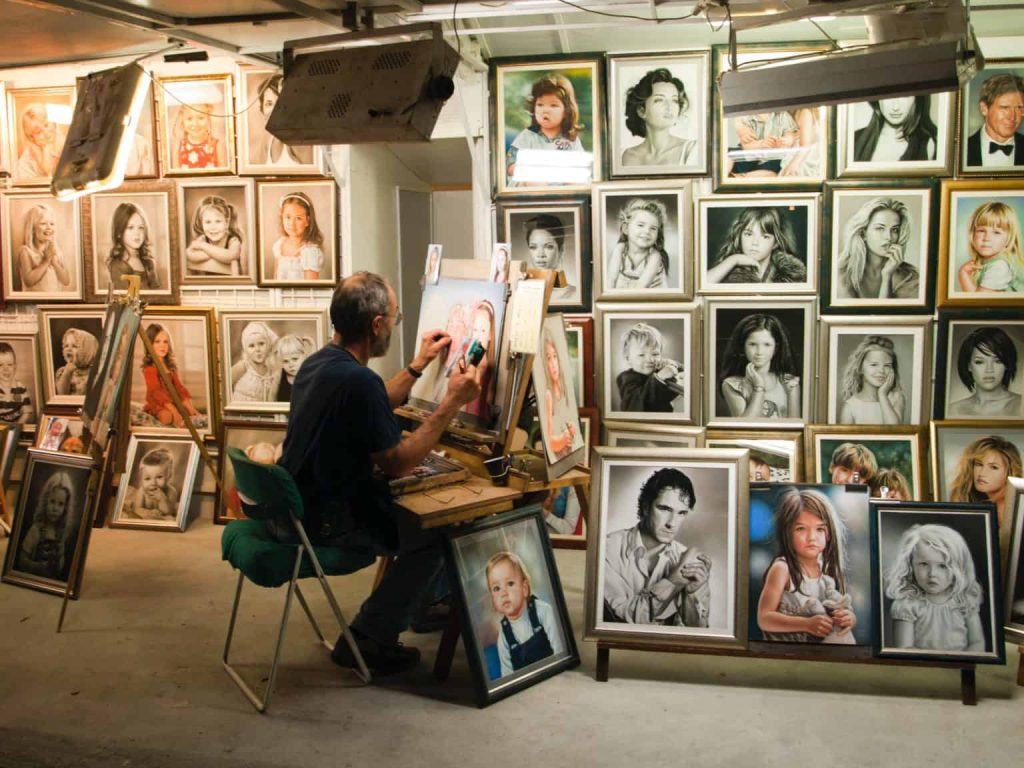
18 Jan Curating Your First Art Collection Showcase
At the heart of this adventure lies your passion for art, a driving force that transforms the mere act of collecting into a deeply personal and enriching experience. As you embark on this thrilling journey, let your enthusiasm guide you, allowing it to shape the narrative of your art collection. Whether you find solace in the strokes of a classic masterpiece or are drawn to the avant-garde expressions of contemporary artists, the curation process becomes a reflection of your taste, personality, and the stories you wish to convey through the carefully selected pieces.The article is your indispensable guide; it was thoughtfully designed to empower novices like you so that you may confidently traverse this thrilling territory and present your carefully chosen collection to the world with style and grace.
Defining Your Theme and Vision of your Art Collection

Photo by Antoni Shkraba
Explore Motivations
Defining your theme and vision for showcasing your collection involves a meticulous exploration of your motivations. Whether driven by financial investment, profound passion, or the desire to share beauty, understanding the core reason behind your collection is pivotal for a successful showcase. By elaborating on your motivation, you can not only align your selections with a purpose but also make informed decisions throughout the curation process. The connection between motivation and success serves as the foundational principle for navigating the multifaceted world of collecting.
Define the Story of Your Art Collection
It’s important to look into each unique urge in order to have a greater understanding of your motives. If your collection represents a monetary investment, talk about the possible profits and how to negotiate the art market. Stress the emotional attachment to the artworks and how this enthusiasm may strengthen the dedication to the curating process for individuals who are driven by intense emotions. On the other hand, if your objective is to spread beauty, consider the happiness this action brings as well as the possible advantages for the neighborhood or visitors to your collection.
Choose a Focus
Crafting a narrative for your collection involves defining its story through unifying themes, styles, or eras. By identifying common threads, you can create a cohesive and compelling narrative that resonates with your audience. The narrative should not only showcase the intrinsic qualities of each piece but also contribute to the overall story you aim to tell. This alignment between individual pieces and the overarching narrative enhances the audience’s engagement and understanding of your collection.
Selecting and Organizing the Artworks

Photo by Susan Q Yin
Prioritize Quality over Quantity
One of the most important rules of thumb is to put quality before quantity. Start by choosing pieces of art that personally speak to you. Examine each piece’s creative quality in depth, taking into account elements like skill, originality, and workmanship. This important procedure guarantees that the selected artworks are of a caliber above and above quantity. Think about how each piece affects the audience’s emotions as well as your own as the curator. It is important to evaluate an artwork’s ability to arouse powerful feelings or forge significant relationships. Setting quality first raises the bar for the collection as a whole and fosters a deeper, more genuine connection between the viewer and the artwork.
Create Cohesive Arrangements
After the selection process is over, the emphasis turns to thoughtfully and cogently arranging the selected artworks. When components like color, texture, size, and theme are properly examined, attention to detail becomes necessary. Playing around with different configurations becomes a creative process, with the goal of using the arrangement of each component to create stories or evoke particular feelings. The arrangement should take into account each piece of art’s unique qualities as well as how it interacts with the others and the surrounding area. Encouraging visitors to take a visual trip across the collection by aiming for a harmonic flow improves their experience. A more meaningful and immersive experience with the carefully chosen artworks is fostered by the curator, who actively directs the audience via the development of cogent groupings.
Craft Informative Labels
Create enlightening labels for every piece of art in the collection to enhance the experience of the visitor even more. These labels include more information than only the title of the piece of art and the year it was created. They also provide the name of the artist and other pertinent characteristics. Further levels of information may be found on the labels, which provide details on the artwork’s inspiration, cultural or historical background, and individual interpretation. By creating a link between the artwork and the viewer, these subtleties encourage a deeper comprehension and bond. It contributes to a deep and meaningful experience by giving viewers the tools to interact with the work on an intellectual and emotional level through the abundance of information it offers. Educative labels provide communication between the viewer and the carefully chosen collection.
Choosing the Venue and Presentation

Photo by yeonhee
Consider Your Space and Budget
Guided by the considerations of space and budget, contemplate whether your exhibition will be hosted in a home gallery, a public space, or an online platform. Each setting demands a tailored approach, accounting for the unique characteristics of the space, available lighting, and the specific target audience. Adaptability is key, ensuring that the chosen venue aligns with the resources at your disposal. Be mindful of budget constraints and assess how well the selected space can accommodate the intended presentation, making adjustments as needed. Whether it’s a cozy home setting, a dynamic public venue, or a virtual gallery, aligning the presentation with the characteristics of the space and your budget sets the stage for a successful showcase.
Enhance the Atmosphere
To create a captivating and memorable experience for viewers, meticulous attention to atmospheric details is essential. Factors such as lighting, wall color, furniture arrangement, and complementary accents contribute to the overall ambiance of the exhibition space. Strive to cultivate an immersive environment that complements the collection’s theme, enhances the artwork’s emotional impact, and engages the audience on a sensory level. Experiment with lighting to highlight specific pieces, choose wall colors that complement the artwork, and strategically arrange furniture to guide the flow of viewers through the space. These considerations collectively create a cohesive and visually appealing atmosphere that enriches the overall viewer experience.
Prepare for Display and Security
Ensuring the proper display and security of the artworks is a critical aspect of presenting a curated collection. Pay careful attention to the logistics of hanging or placing each piece, taking into account its size, weight, and aesthetic requirements. Utilize secure mounts and fixtures to prevent accidents or damage, particularly for valuable or delicate pieces. In addition to properly exhibiting the artwork, adequate lighting is important for establishing a welcoming and comfortable atmosphere. To guard against unanticipated circumstances, think about getting insurance and putting safety precautions in place to stop damage or theft. The curator and the audience may rest easy knowing that the curated collection is protected by a comprehensive approach to presentation and protection.
Engaging with Your Audience

Photo by Evangeline Shaw
Prepare an Opening Event or Online Exhibition
To establish a strong connection with your audience and generate excitement, consider organizing a captivating opening event or an online exhibition. This serves as a platform to showcase the curated collection to friends, collectors, and art enthusiasts. The opening event, if held in a physical space, can include elements like guided tours, artist talks, or interactive installations, creating a dynamic and immersive experience for attendees.
For an online exhibition, leverage digital platforms to reach a wider audience. Implement virtual tours, live-streamed artist discussions, or interactive elements that allow viewers to engage with the artworks from the comfort of their own spaces. By crafting an enticing opening event or online exhibition, you not only create a memorable experience for attendees but also set the stage for ongoing engagement with the curated collection.
Promote Your Showcase Online and Offline
Attracting the world about your well-chosen exhibition is essential to attracting interest and encouraging participation. To reach a wide range of people, combine physical and internet marketing techniques. Use social media to spread information about events, aesthetically pleasing material, and behind-the-scenes looks at the carefully chosen collection. Interact with art blogs to reach specialized audiences and attract fans who actively pursue creative pursuits.
Simultaneously, harness the reach of local press outlets to extend the promotion offline. Press releases, interviews, and features in newspapers or magazines can attract a broader audience, including those who might not be active on online platforms. Encourage viewers to share their thoughts, impressions, and questions about the collection through social media channels or dedicated online platforms. This dialogue not only promotes the showcase but also establishes a meaningful connection between the curator and the audience, contributing to a more enriching experience for all involved.
Final Touches and Looking Ahead

Photo by Aleksandr Slobodianyk
Reflect and Refine Your Art Collection
After your well-planned exhibition comes to an end, give the whole thing some serious thought. Consider the feedback received, the influence of the show on your audience, and your evolution as a curator. Consider the triumphs and obstacles faced throughout the showcase, and apply these realizations to improve your strategy for the next shows. To keep becoming better, you have to learn from your mistakes. Evaluate how well your curation decisions worked, how well your marketing tactics worked, and how the audience responded as a whole. By engaging in this reflective process, you may modify and enhance your vision, making each subsequent exhibition more sophisticated and aligned with your changing viewpoint as a collector.
Embrace the Journey
Beyond the specific exhibition, embrace the broader journey of curating and sharing art. Enjoy the process of connecting with others through your collection. Allow your collection to evolve organically, reflecting your changing tastes, discoveries, and artistic preferences. Recognize that your journey as a collector is dynamic, and your collection can be a living, breathing entity that evolves with you. Find joy in the exploration of new artworks, artists, and themes. Celebrate the connections you establish with fellow art enthusiasts, artists, and the community at large. Embracing the journey means recognizing that each exhibition is a chapter in a larger narrative of your growth as a collector and curator. By being open to change and enjoying the evolution of your collection, you contribute to a rich and fulfilling experience for both yourself and your audience.

Photo by Jessica Pamp
Conclusion
Starting your first exhibition of your art collection is an adventure that combines enthusiasm, hard work, and the delight of sharing. The foundation of a good showcase is composed of knowing your reasons, emphasizing quality, and developing a cogent story. As you go, keep honing your vision, accept that your collection is a work in progress, and treasure the relationships you have made.
It takes more than just showcasing artwork to curate your first art collection—you also need to create an engaging experience for both you and your audience. Smart planning, captivating graphics, and interesting marketing boost the effect. Establishing relationships enhances the experience, whether through opening-night festivities or virtual exhibitions. Take pleasure in the journey, absorb knowledge from mistakes, and allow your collection to dynamically represent your changing creative interests and discoveries.
Key Takeaway
Key Aspect | Takeaway |
Motivation | Understand why you want to showcase your collection, whether for passion, investment, or sharing beauty. |
Theme and Vision | Define a cohesive narrative, choose a central focus, and align your selections with a purpose. |
Artwork Selection | Prioritize quality over quantity; select pieces with personal resonance and emotional impact. |
Organizing Artworks | Thoughtfully organize using color, texture, scale, and theme; create cohesive arrangements that tell a story. |
Informative Labels | Enhance engagement by providing comprehensive information about each artwork, including the artist’s name, title, medium, and year. |
Venue and Presentation | Tailor the presentation to fit the space, lighting, and target audience; pay attention to details like atmosphere, decor, and security. |
Engaging with Audience | Organize opening events or online exhibitions; promote through social media and local press; encourage interaction and feedback. |
Reflection and Refinement | Learn from experiences, continuously refine your vision, and let your collection evolve with changing tastes and discoveries. |
Enjoying the Process | Embrace the journey of sharing art, connect with others, and let your collection be a dynamic reflection of your evolving artistic journey. |
FAQs
How do I choose a central focus for my art collection?
When deciding on a central focus for your art collection, start by considering your passions. Think about the themes, styles, or genres that resonate with you on a personal level. This could be anything from abstract expressionism to contemporary photography. Reflecting on your interests will infuse authenticity into your collection. Additionally, contemplate the story you want your collection to tell. Do you want to explore the evolution of a specific art movement, or do you prefer a more eclectic mix? Determine whether you want a consistent theme or a rotating one, allowing for variety and exploration over time. Striking a balance between personal passion and a cohesive narrative will guide you in selecting artworks that align with your vision.
How can I enhance the atmosphere of my art showcase on a budget?
Transforming the atmosphere of your art showcase doesn’t have to break the bank. Start with the basics, such as paying attention to lighting. Consider using strategically placed spotlights or string lights to highlight key pieces. Experiment with the wall color to create a backdrop that complements your collection – subtle neutrals or bold accent walls can both make a statement. Complementary accents, such as affordable frames or DIY display solutions, can add a touch of sophistication. Don’t underestimate the power of small details like well-placed plants or decorative elements that tie the space together. By focusing on these elements, you can elevate the ambiance of your art showcase without a significant financial investment.
How can I promote my art showcase effectively?
Effectively promoting your art showcase involves leveraging various platforms and engaging your audience. Start by harnessing the power of social media. Share sneak peeks, behind-the-scenes content, and artist profiles to generate anticipation. Utilize popular platforms like Instagram, Facebook, and Twitter to reach a wider audience. Engage with art communities and blogs, sharing your story and the unique aspects of your collection. Collaborate with local press to feature your showcase, whether through interviews or event listings. Encourage online interaction by creating a dedicated hashtag or hosting virtual events. Building a community around your collection fosters a sense of connection and loyalty. Respond to feedback, and consider offering exclusive content or promotions for your online audience. The more you engage and share, the more buzz you’ll create around your art showcase.
Discover effective strategies and invaluable tips for cultivating and nurturing vibrant art communities, fostering collaboration, engagement, and a supportive ecosystem for artists and enthusiasts alike through the “Building Art Communities: Strategies and Tips” guide.

